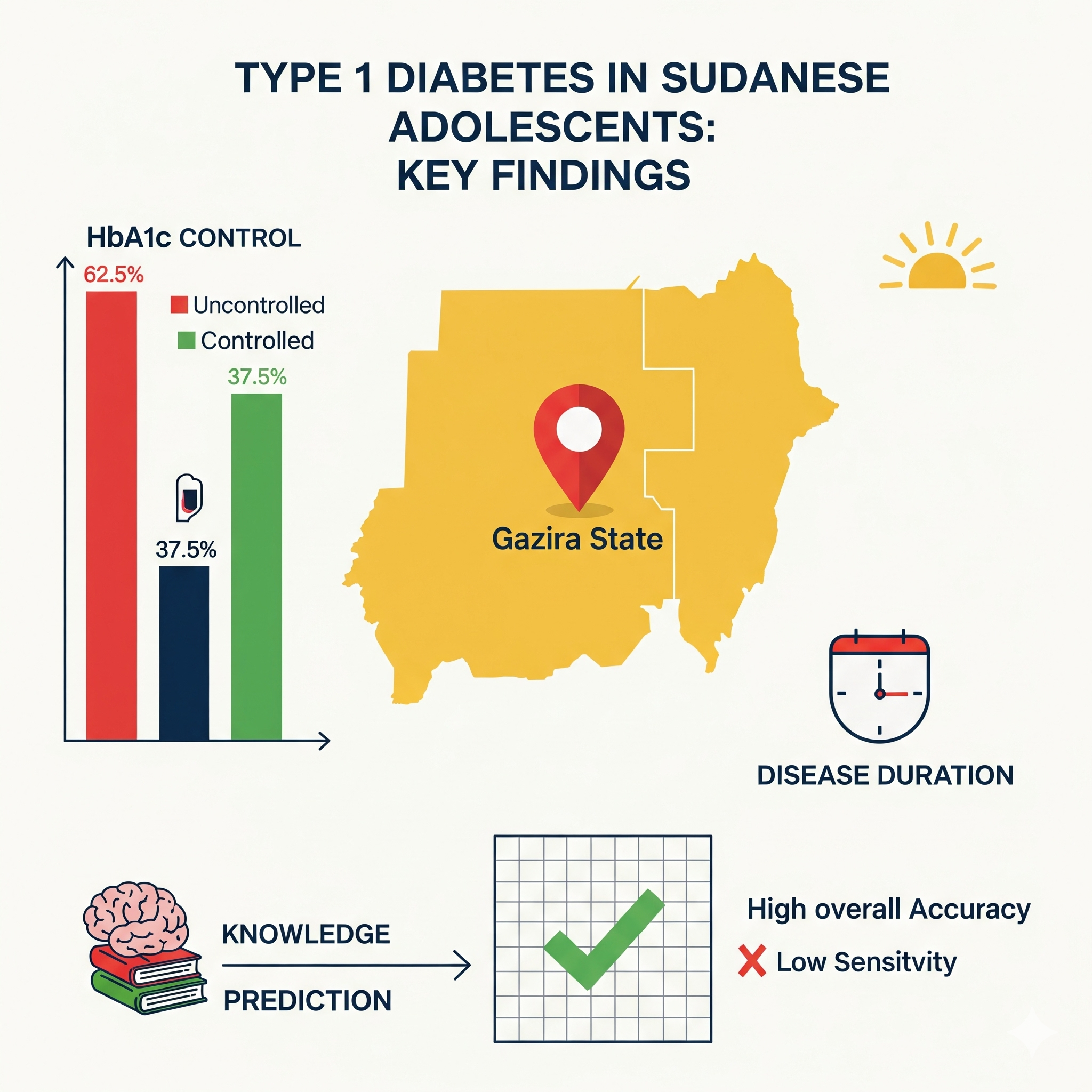The Gazira Diabetes Puzzle: Logistic Regression Reveals Key Predictors of Type 1 Diabetes in Adolescents
Hana Elboushi ( Only Author )
Abstract
BACKGROUND:
Type 1 diabetes (T1D) in adolescents poses a growing public health concern
worldwide, particularly in low-resource settings such as Sudan, where fragile healthcare
infrastructure, limited laboratory access, and ongoing conflict exacerbate management
challenges. Understanding determinants of glycaemic control is critical for designing targeted
interventions. This study aimed to identify predictors of glycaemic control among adolescents
with Type 1 Diabetes (T1D) in Gazira State and to evaluate the performance of a
logistic regression model in predicting outcomes.
Methods: A cross-sectional study was conducted among 400 adolescents with type 1
diabetes mellitus (T1D) between 2020 and 2021. Data were obtained through structured
Visual
Abstract
JAREM Vol. 69 No. 25 (2025): New Findings in the East Mediterranean Region
Questionnaires and clinical records. Glycaemic control was assessed by HbA1c,
categorised as controlled (< 7.5%) or uncontrolled (≥ 7.5%). Associations between
sociodemographic, clinical, and knowledge-related factors and control status were examined
using Chi-square tests. A binary logistic regression model was applied to identify independent
predictors, with model fit evaluated using Hosmer–Lemeshow statistics and predictive
accuracy assessed.
Results: Of the participants, 250 (62.5%) had uncontrolled HbA1c, and 150 (37.5%) had
controlled values. Disease duration was significantly associated with poor control (χ
2 = 20.606, p
= 0.015). Knowledge-related factors showed strong effects: adolescents who knew their last
HbA1c (χ
2 = 83.115, p < 0.001), understood HbA1c as an average glucose indicator (χ
2 =
15.706, p < 0.001), recognised vomiting as a ketoacidosis symptom (χ
2 = 2.246, p = 0.019),
and tested more frequently when sick (χ
2 = 4.245, p = 0.035) were more likely to have controlled
HbA1c. Logistic regression confirmed a good fit (Model χ
2 = 98.924, p < 0.001; Hosmer–
Lemeshow χ
2 = 0.839, p = 0.999) with 95% overall accuracy, high specificity (98.7%) for
uncontrolled cases, but low sensitivity (37.5%) for controlled cases. Independent predictors
included frequency of HbA1c testing (OR = 2.29, p = 0.034), knowledge of own HbA1c result
(OR = 2.65, p < 0.001), and knowledge to test more when ill (OR = 4.17, p = 0.108).
Conclusion: Most adolescents in Gazira had uncontrolled diabetes, with practical
knowledge and disease duration as key determinants. Specific skills—such as HbA1c literacy
and sick-day monitoring—were stronger predictors than general awareness. Improving
adolescent-focused education, ensuring reliable HbA1c testing, and addressing systemic
barriers are crucial to reducing the T1D burden in Sudan and similar contexts
Downloads





